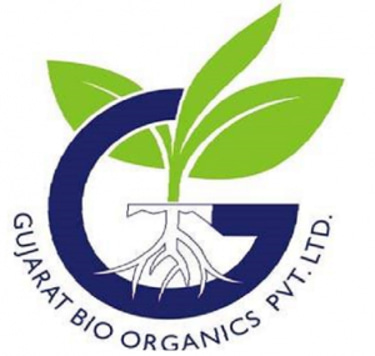Unmasking the Culprits: What Really Causes Apple Root Rot?


Understanding Apple Root Rot
Apple root rot is a devastating condition that affects apple trees, primarily caused by various pathogens that thrive in damp, poorly drained soil. This disease, which can severely compromise the health of affected trees, typically results from a combination of overwatering, poor soil drainage, and the presence of specific fungi, such as Phytophthora species. Understanding apple root rot is vital for orchardists, as it directly impacts crop yields and tree longevity.
Symptoms of apple root rot can be subtle at first and may include yellowing of the leaves, wilting, and stunted growth. In more advanced stages, trees may exhibit signs of dieback, where the upper portions of the plant begin to decline, often giving the initial impression of a nutrient deficiency. An essential characteristic of root rot is the dark, decayed roots that become mushy as the disease progresses. The absence of healthy root systems prevents the tree from adequately absorbing water and nutrients, leading to a cascading effect that diminishes the overall health of the tree.
Moreover, the impact of apple root rot extends beyond individual trees. An infestation can spread through the soil, affecting neighboring trees within the orchard, thereby threatening the entire ecosystem's productivity. Orchardists must be vigilant when it comes to recognizing and mitigating the risks associated with this condition. Effective management practices, such as proper irrigation techniques, soil testing, and the introduction of resistant rootstock varieties, can help curb the prevalence of root rot. Addressing apple root rot is not merely a matter of preserving an individual tree; rather, it is crucial for maintaining the overall health and viability of the orchard.
The Fungal Invaders
Apple root rot is primarily caused by specific fungal pathogens, notably the genera Phytophthora and Fusarium. These fungi are notorious for their capability to invade the root systems of apple trees, leading to significant damage and, in severe cases, tree death. Understanding how these pathogens operate is essential for successful management and prevention strategies.
Phytophthora is a water mold rather than a true fungus, and it thrives in saturated soil conditions. When soil moisture levels rise due to overwatering or poor drainage, spore germination increases, allowing Phytophthora to infiltrate the root system of apple trees. The initial invasion often goes unnoticed; however, as the pathogen proliferates, it releases destructive enzymes that break down root tissues and inhibit the tree's ability to absorb water and nutrients. Symptoms of Phytophthora root rot can often include yellowing leaves, stunted growth, and wilting, indicating that the tree is struggling to maintain its health.
On the other hand, Fusarium is a soil-borne fungus that can enter apple roots through wounds or natural openings. It produces mycelia that invade the vascular system of the tree, leading to a condition known as vascular wilt. The symptoms of Fusarium infections often manifest as wilting leaves, darkened roots, and overall decline in tree vigor. Fusarium prefers moderately moist conditions, making poorly drained soils its optimal habitat.
Both pathogens share common environmental conditions that favor their growth and proliferation, such as excessive moisture, high organic matter, and limited air circulation around the roots. Additionally, trees that are stressed from drought or damage are more susceptible to fungal attack. To combat these invaders effectively, it is crucial to maintain proper soil drainage, manage irrigation practices, and regularly monitor for early signs of root rot to ensure the long-term health and productivity of apple orchards.
The Role of Soil Health
Soil health is a fundamental factor influencing the overall health of apple trees and their susceptibility to root rot. The interaction between soil composition, drainage capabilities, and the presence of beneficial microorganisms plays a critical role in determining whether or not apple trees thrive or succumb to diseases such as root rot. Healthy soil acts as a buffer against pathogens, providing essential nutrients and fostering a thriving ecosystem that supports root development.
One key aspect of soil health is its composition, which includes the proportions of sand, silt, and clay within the soil. Ideally, apple trees flourish in well-structured soil that allows adequate aeration and moisture retention. However, when soil is too compacted or too sandy, it can lead to poor drainage. Excess water accumulation creates an ideal environment for root rot pathogens, such as Phytophthora spp. These pathogens thrive in waterlogged conditions, severely compromising the health of apple tree roots.
Furthermore, the presence of beneficial microorganisms is crucial in maintaining a balanced soil ecosystem. Microorganisms, including bacteria and fungi, contribute to nutrient cycling and can be antagonistic toward harmful pathogens. A decline in microbial diversity often leads to the proliferation of root rot pathogens, exacerbating the risk of disease. Orchardists can take proactive steps to improve soil health by incorporating organic matter, adjusting pH levels, and implementing crop rotation practices to enhance microbial populations.
In conclusion, maintaining soil health is indispensable for preventing apple root rot. By focusing on proper soil composition, ensuring appropriate drainage, and fostering beneficial microorganisms, orchardists can create an environment less conducive to the development of root rot, ultimately safeguarding their apple crops and enhancing overall yield.
Environmental Factors Contributing to Root Rot
Apple root rot is a significant disease that affects apple trees, and its emergence is often linked to various environmental factors. Understanding these influences is essential for apple growers to mitigate the risks. One of the primary contributors to root rot is excessive moisture in the soil, which can arise from heavy rainfall, poor drainage systems, or over-irrigation. When the soil remains saturated, it creates an anaerobic environment that hinders root respiration, leading to root decay.
Additionally, certain weather patterns can exacerbate the situation. For instance, warm periods following heavy rains can lull growers into a false sense of security, but these conditions can facilitate the growth of pathogens that cause root rot. Conversely, cold temperatures can stress apple trees, making them more susceptible to diseases, including root rot. Fluctuations in temperature can shock apple trees, impairing their immune response and allowing opportunistic pathogens to thrive.
Climate change is also playing an increasingly critical role in shaping these environmental factors. As climate patterns shift, growers may experience more extreme weather conditions, such as prolonged wet spells followed by droughts. This erratic climate can lead to inconsistent moisture levels in the soil, further complicating the management of apple trees. Such challenges necessitate a proactive approach to monitoring soil conditions and adjusting irrigation schedules accordingly.
Anticipating these environmental pressures involves implementing best management practices that include regular soil testing, incorporating drainage systems, and practicing crop rotation. Ensuring that apple trees are planted in well-drained soils can significantly reduce the likelihood of root rot. Moreover, using resistant apple tree varieties can also help mitigate the impact of these environmental factors on root health.
Nutrient Deficiencies and Surpluses
Nutrient management is critical for maintaining the health of apple trees and preventing conditions such as root rot. Apple trees require a balanced supply of essential nutrients, including nitrogen, phosphorus, potassium, and micronutrients such as calcium, magnesium, and iron. A deficiency in any of these nutrients can significantly weaken a tree's resilience and increase its vulnerability to pathogens that cause root rot.
Nitrogen, for example, is vital for leaf development and overall growth. A deficiency can lead to stunted growth and yellowing leaves, indicative of a stressed tree. On the other hand, excessive nitrogen can result in lush foliage at the expense of root health, ultimately making the tree susceptible to root rot. Similarly, phosphorus is crucial for root development. Insufficient phosphorus can weaken root systems, whereas too much can create imbalances that hinder the tree's absorption of other essential nutrients.
Potassium plays a role in the overall health of the tree, influencing water regulation and disease resistance. Both shortages and surpluses of potassium can diminish the tree's ability to fend off root pathogens. Micronutrients, while needed in smaller amounts, are equally important; deficiencies in these elements can further compromise the tree's defenses.
To combat these issues, proper fertilization strategies are necessary. Soil testing should be a priority to understand existing nutrient levels and adjust fertilization practices accordingly. Organic fertilizers or slow-release formulations can provide a steady supply of nutrients without the risk of surge effects that occur with synthetic products. Additionally, maintaining proper soil pH levels, which should ideally be between 6.0 and 7.0, can enhance nutrient availability, promoting robust root systems that are less prone to rot.
Orchard Practices and Their Impact
Proper orchard management is essential in mitigating the risk of apple root rot, a serious issue that can significantly affect the health and productivity of apple trees. Various practices that orchardists adopt can either inadvertently introduce or help manage conditions conducive to this disease. Understanding these practices is key to maintaining the vitality of apple trees.
Watering routines play a critical role in the management of water around the root zone. Overwatering can result in saturated soil, leading to root oxygen deprivation and creating an environment where pathogens thrive. Conversely, insufficient watering can stress trees, weakening their defenses against diseases, including root rot. Orchardists should strive for a balanced irrigation schedule that considers weather conditions, soil type, and tree requirements to optimize moisture levels.
Pruning techniques also contribute significantly to tree health. By removing dead or diseased wood, orchardists can enhance air circulation, which reduces humidity levels and promotes quicker drying of the soil and plant surfaces. Furthermore, proper pruning allows trees to allocate resources more efficiently, making them less susceptible to diseases. Implementing techniques such as thinning out branches can facilitate better airflow and sunlight penetration, both of which aid in disease prevention.
Intercropping is another practice that can benefit apple orchards. Introducing certain companion plants can help improve soil health and reduce pest populations that may promote root diseases. However, orchardists must choose compatible plant species to avoid competition for resources or harboring additional disease vectors. Integrating beneficial plants into the orchard landscape can enhance the resilience of apple trees against root rot.
Lastly, while chemical treatments may offer short-term relief from pathogens, their application should be judicious and conducted in accordance with best practices to prevent adverse long-term effects on soil health. Orchard managers should, therefore, assess the potential impacts of chemical use critically. By following these management protocols, orchardists can effectively reduce the risk of apple root rot and maintain a thriving environment for their trees.
Prevention and Management Strategies
Effective management of apple root rot necessitates a comprehensive approach that incorporates various preventive measures tailored to the specific needs of apple trees. One of the foundational strategies is ensuring optimal soil conditions. This begins with selecting well-draining locations for planting, as excessive moisture is a primary contributor to root rot. Implementing soil amendments such as organic matter can enhance drainage and promote healthy root growth, thereby reducing the likelihood of disease.
Another critical strategy involves the selection of resistant rootstocks. Certain rootstocks are bred specifically for their durability against root rot pathogens and can substantially improve the resilience of apple trees. By choosing varieties known for their resistance, growers can mitigate the risk of root rot while also ensuring productivity and overall tree health.
Integrated pest management (IPM) techniques are also vital in combating apple root rot. This approach combines cultural, mechanical, and biological control methods to manage pests and diseases effectively. Regular monitoring and inspections of the trees can help identify early signs of stress or disease. By maintaining a watchful eye on tree health, timely interventions can be made to correct issues before they escalate.
In addition, maintaining proper watering practices is essential. Overwatering can lead to waterlogged soils, creating an environment conducive to root rot. Implementing a consistent watering schedule that accommodates weather conditions can help maintain balanced soil moisture levels. Furthermore, mulching around the base of the trees can assist in regulating soil temperature and moisture, while also suppressing weed growth that may compete for resources.
In conclusion, the prevention and management of apple root rot depend on a holistic approach that includes soil management, resistant rootstocks, and diligent monitoring practices. By adopting these strategies, apple growers can enhance the longevity and productivity of their orchards, ultimately leading to healthier and more fruitful trees.
Read Further: Turning the Tide – Solutions to Combat Apple Root Rot
